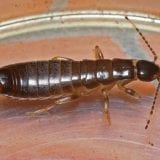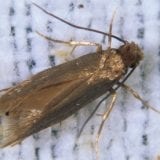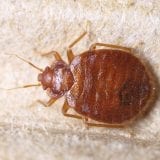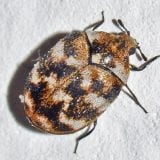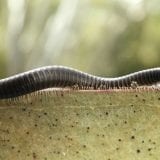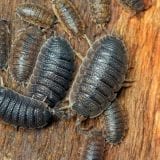Effective and Affordable Home Protection Plans for Year-Round Pest Protection
Other pests we treat in the Canberra ACT Area
Due to environmental considerations we do not spray garden beds or areas, Earwigs are included as a part of of Spider & Comprehensive treatment. Once they cross the sprayed perimeter of your house or garage they will absorb the treatment and die in due course. If you do see one make it inside, simply give the treatment a reasonable amount of time to take effect.

Colour
Earwigs come in a variety of colours, but the species found in Australia are predominantly a dark reddish brown.
Size
Earwigs have a flat, elongated body around 35 millimetres in length. Earwigs have one small, hardened set of wings and a set of larger, membranous ones which fold underneath the others. Their flexible, telescopic abdomen ends with two pincer-like cerci (tail parts) at its base.
Habitat
Earwigs’ natural habitats are dark, sheltered environments. You will find them in the yard under rocks, leaf litter and tree bark, or in moist environments in the home like the bathroom, laundry or kitchen. They are nocturnal yet often attracted to light, so you may often see them when you turn the lights on at night.
The treatment of silverfish is included in our Canberra Pest Control Comprehensive Treatment. This involves the careful application of residual surface spray and insecticide dust in affected areas of the home, including roof voids.
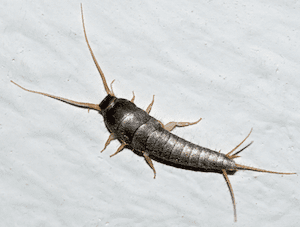
Size
Silverfish are small, wingless insects typically around 13 to 25 millimetres in length. Their tapered tail end, greyish metallic colouring and wiggling movements give them a fish-like appearance. They have two long antennae at the top of the head and three sensory filaments at the base of the abdomen.
Habitat
They inhabit dark, undisturbed areas around the home and are often found in cupboards and bookshelves. They also prefer humid environments and can live around the plumbing in the kitchen and bathroom.
The treatment of clothes moths is included in our Canberra Pest Control Comprehensive Treatment. This involves the careful application of residual surface spray and insecticide dust in affected areas of the home, including roof voids. We cannot however, spray your clothing.
To kill larvae living in your wardrobe, cover your clothes with a black plastic bag and hang them outside in the sun for a few hours. You can also use surface spray in any cracks or crevices around the area.

Colour
Light brown/tan in colour, adult clothes moths look similar to common outdoor moths, only much smaller. Adult clothes moths are 7 to 8 millimetres in length, but the larvae can be 12 to 13 millimetres in length. It is the cream coloured, caterpillar-like larvae of these moths that cause most of the damage. The larvae feed on natural clothing fibres such as wool.
Habitat
Clothing moths are generally found in humid coastal areas. In Canberra, the most common species are the casemaking clothes moth and the common clothes moth. In your home, they live mostly in dark, closed off areas close to food sources such as your wardrobe. They are mostly nocturnal so you may find evidence of their presence such as holes in clothing before you see any moths.
Control procedures for bed bugs must be preceded by a thorough inspection from one of our technicians. Often the careful application of insecticide to cracks and crevices in bed frames and other harbourage areas is necessary.
Pest control for bed bugs requires specific and targeted treatment. If you think you have a bed bug infestation, you should contact the Canberra Pest Control office straight away for further information.

Colour
The common bed bug is a parasite that feeds exclusively on human blood. Their evidence can be seen from itchy red bites on your body and small droplets of blood on the sheets after sleeping in an infested bed. They are flat, oval shaped flightless insects with only small vestigial wings. They range from light brown to reddish brown and adults can grow from 1.5 to 3 millimetres in length.
Habitat
Their preferred habitat is in warm houses, particularly inside mattresses, bedding and other sleeping areas. Although they do not live on moving humans, they can travel with us. This means that if you have slept somewhere that had bed bugs, there is a chance you could have brought them home with you, to set up camp in your own bed.
We treat for carpet beetles using a course spray in all areas that may be affected, including: under furniture, room perimetres, inside wardrobes and in other low traffic carpeted areas.

Colour
Adult carpet beetles are small and difficult to spot, growing from 1.7 to 3.5 millimetres long. They have a rounded body and can be black or an irregular white, yellow and brown pattern. As with pantry and clothes moths, the larvae are larger and do most of the damage. Carpet beetle larvae are 4 to 5 millimetres in length and can look like hairy caterpillars with light and dark brown stripes.
Habitat
Carpet beetles are a common pest worldwide and can usually be found living in the undisturbed carpet areas underneath furniture and in dusty areas like air ducts or in the cracks of floorboards. Larvae can cause serious damage by feeding on the organic fibres in your carpet, rugs and upholstery.
Control procedures for pantry moths must be preceded by a thorough inspection from one of our technicians. All food must be removed from the area before treatment and destroyed if necessary. Pest control for pantry moths involves the careful application of insecticide to cracks and crevices in the pantry and other harbourage areas.
Treatment of pantry moths is rarely carried out exclusively, but rather as part of an extensive treatment program. If you request help with a specific pantry moth problem however, we will be happy to assist you.

Colour
Also known as the Indian meal moth, the pantry moth adult is larger than the clothes moth, growing from 8 to 10 millimetres in length, yet the larvae are about the same, growing from 12 to 13 millimetres in length. Pantry moths can be distinguished by their colouring; the inner half of their upper wings are light yellowish grey and the outer half is a dark, patterned brownish grey.
Habitat
As their name suggests, pantry moths will often live in dark cupboards close to human food sources. They are a common pest worldwide that feed on mostly grains and cereals.
Millipedes are a group of arthropods that are characterised by having two pairs of jointed legs on their body segments. Millipedes are referred to as detritivores, which means they feed on decaying leaves and other dead plant matter.

Colour
Generally black or brown in color, although some species are known to be brightly coloured. Often the brightly coloured ones warn that they are toxic.
Size
Millipedes come in a variety of body shapes and sizes ranging from 2 mm to 35 cm in length. Millipedes body segments can range from eleven to hundreds.
Habitat
Millipedes generally inhabit under rocks, in leaf litters, or in rotting logs. Millipedes are generally harmless to humans. Some may become household or garden pests, especially in greenhouses.
Lifecycle
Female millipedes lay their eggs in soil. Millipedes go through incomplete metamorphosis. This means that once the young millipedes hatch, they stay underground until they've moulted. As they continue to moult, the millipede gains more body segments and more legs.
Slaters aka woodlice are multi-legged pests with a shell-like exoskeleton. They invade homes in large groups, in search of moisture. Their presence can indicate a dampness problem within the home.

Colour
Different species vary in color, however, are most often grey or brown.
Size
Slaters can also vary in size, although they generally do not exceed 15mm. Adults are small in appearance and have 7 body segments with 7 pairs of legs. Young slaters may only have 6 body segments and 6 pairs of legs.
Habitat
Woodlice are generally found in gardens and considered beneficial to gardens for their role in controlling other pests. They usually scavenge on rotting wood and vegetation. In high numbers they can grow too large for some gardens, and can move inside in search of a new home.
Lifecycle
The female woodlouse will keep fertilised eggs in the underside of her body until they are ready to hatch. Offspring look like small, white, woodlice that are curled into little balls. Females are also capable of reproducing asexually.
The Most Common Pests We Treat
10 pest special offer!
When treating for spiders, we also exterminate cockroaches, silverfish, earwigs, slaters, millipedes, clothes moths, pantry moths, paper wasps & mud wasps at no extra cost.
